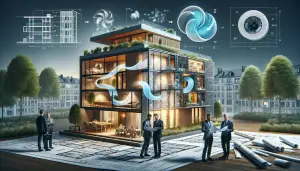
The Role of Airtightness in Achieving BREEAM Excellence
Understanding how airtightness contributes to BREEAM Excellence is crucial for your construction project. Airtightness affects not just energy efficiency but also overall environmental performance, impacting things like reduced energy costs, enhanced comfort, and improved indoor air quality. BREEAM (Building Research Establishment Environmental Assessment Method) sets the benchmark for sustainable building practices, and achieving BREEAM Excellence signifies a top-tier commitment to these principles. By ensuring stringent airtightness, you’re not only improving energy conservation but also boosting your building’s BREEAM score. Ratio Seven can help you achieve these goals through expert consultation, detailed testing, and specialised guidance on the BREEAM certification process.








